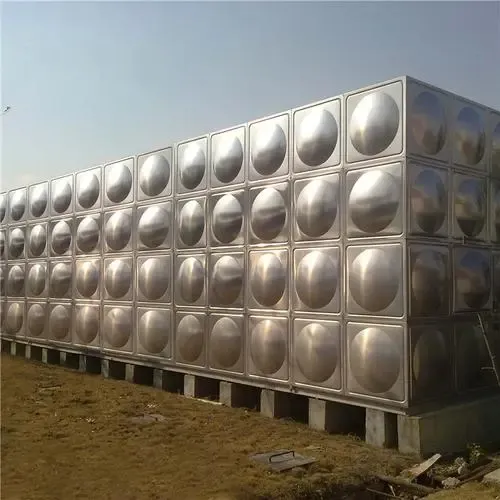loading...
- No. 9, Xingyuan South Street, Dongwaihuan Road, Zaoqiang County, Hengshui, Hebei, China
- admin@zjcomposites.com
- +86 15097380338
- Welcome to visit our website!
Advanced FRP Handrail Solutions for Safety and Durability in Various Environments
Exploring the Benefits of FRP Handrail Systems
In recent years, the construction and infrastructure industries have witnessed a significant shift towards advanced materials that enhance safety and sustainability. One such material that has gained prominence is Fiber-Reinforced Polymer (FRP). Among its various applications, FRP handrail systems stand out due to their exceptional durability, low maintenance requirements, and versatility. This article delves into the key advantages of FRP handrail systems and their growing popularity in various sectors.
What is FRP?
Fiber-Reinforced Polymer (FRP) is a composite material consisting of a polymer matrix reinforced with fibers, typically glass, carbon, or aramid. The combination of these materials results in a lightweight yet remarkably strong substance that offers various advantages over traditional materials like wood or metal. FRP is well-known for its corrosion resistance, making it an ideal choice for environments exposed to harsh elements.
Key Advantages of FRP Handrail Systems
1. Corrosion Resistance One of the standout features of FRP handrail systems is their resistance to corrosion. Unlike metal handrails, which can rust and degrade over time, FRP handrails remain unaffected by moisture, salt, and other corrosive substances. This characteristic is particularly valuable in coastal areas, chemical plants, and other environments prone to environmental stress.
2. Durability and Longevity FRP handrails are designed to withstand extreme weather conditions, including high winds, heavy snowfall, and intense sunlight. Their stability means they have a longer lifespan compared to traditional materials, leading to reduced replacement costs over time. This durability is a significant factor for industries such as construction, transportation, and large-scale infrastructure.
3. Low Maintenance Maintenance costs can be a burdensome aspect of managing facilities, but FRP handrails demand very little upkeep. Their non-porous surface prevents dirt and grime from accumulating, making cleaning simple and reducing the need for frequent maintenance routines. This not only saves time and money but also ensures that the aesthetic appeal of the handrails remains intact.
frp handrail system

4. Lightweight Construction The lightweight nature of FRP materials allows for easier handling and installation. This characteristic contributes to reduced labor costs and faster installation times, enabling projects to proceed more efficiently. The ease of installation is particularly beneficial in locations that are hard to access or require quick turnaround times.
5. Safety and Design Flexibility FRP handrail systems can be engineered to meet specific safety standards and load requirements, providing peace of mind for users. Additionally, the material can be molded into various shapes, colors, and textures, offering architects and designers unparalleled freedom to create aesthetically pleasing and functional designs. This flexibility ensures that handrails can be tailored to suit a variety of environments, enhancing both safety and visual appeal.
6. Eco-Friendly Choice As sustainability becomes increasingly important in construction and manufacturing, FRP handrails offer an eco-friendly alternative to traditional materials. Many FRP products are made from recycled materials, reducing the carbon footprint associated with production. Furthermore, their long lifespan and low maintenance contribute to less waste over time.
Applications of FRP Handrail Systems
FRP handrail systems find applications across various sectors, including commercial buildings, bridges, marine environments, and industrial facilities. Their versatility makes them suitable for residential and public spaces such as parks and schools, where safety and durability are paramount.
Conclusion
In conclusion, FRP handrail systems represent a significant advancement in the field of safety and construction materials. Their unique combination of corrosion resistance, durability, low maintenance, lightweight design, design flexibility, and eco-friendliness makes them an attractive choice for a wide range of applications. As industries continue to prioritize safety, efficiency, and sustainability, the adoption of FRP handrail systems is likely to increase, setting a new standard in structural design. For builders and architects looking to balance performance and aesthetics, FRP handrails offer a solution that stands the test of time.
-
The Rise of FRP Profiles: Strong, Lightweight, and Built to LastNewsJul.14,2025
-
SMC Panel Tanks: A Modern Water Storage Solution for All EnvironmentsNewsJul.14,2025
-
GRP Grating: A Modern Solution for Safe and Durable Access SystemsNewsJul.14,2025
-
Galvanized Steel Water Tanks: Durable, Reliable, and Ready for UseNewsJul.14,2025
-
FRP Mini Mesh Grating: The Safer, Smarter Flooring SolutionNewsJul.14,2025
-
Exploring FRP Vessels: Durable Solutions for Modern Fluid HandlingNewsJul.14,2025
-
GRP Structures: The Future of Lightweight, High-Performance EngineeringNewsJun.20,2025
